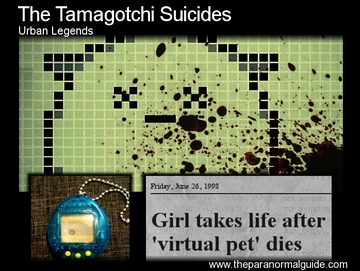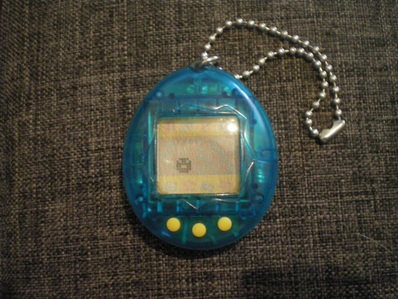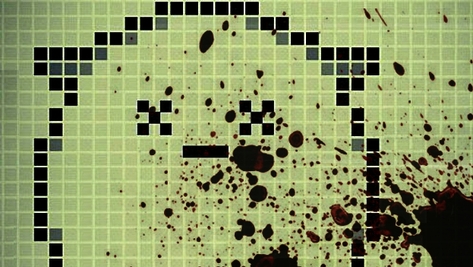
Before long several deaths were linked to the passing of these virtual pets.
A Craze is Born
 Tamagotchi P1.
Tamagotchi P1. When the toy is first activated, an egg appears on screen. After a while it hatches, and the simulation begins. A good owner could keep their pet going for quite a long time indeed, where as someone who is not so careful may see an end to their pet in only a few days.
Tamagotchi’s were quite demanding on their owner’s time, needing to be fed quite frequently, or keeping the screen clear of their 'leavings' in order to avoid getting sick. As one can imagine, many children took their virtual pets to school which, in itself, caused a few problems.
After about a year Bandai released the Tamagotchi in the US, where it also grew quite the following. School students were taking their pets to class, and it soon became such a distraction that many schools declared a ban on them.
Although it was possible to effectively pause the pet by going into the settings for changing the time, not many children were that techno-savvy, and soon many of these virtual pets were getting sick during the day, as their owners were away.
Supply Not Meeting Demand
 A sick virtual pet.
A sick virtual pet. With the huge demand on the product, Bandai had a hard time keeping up with manufacturing the product. This lack of supply caused problems, as children were having their tamagotchi’s stolen from them. A sad fact for a child, to have their pet taken from them, virtual or not, but then things began to get decidedly dark.
Tamagotchi’s were not only in the realm of children, but many adults took up the past time of raising a happy little fellow. The product was heavily marketed to children, but there was definitely an opening for people of all ages to enjoy. It became addictive.
Once again the lack of supply came into play, but whereas one child robbing another would essentially be an act of threat, or a bit of pushing, between adults it was much more violent. It is absolutely bizarre to think on, but several adults were said to have been stabbed for their virtual pets.
However, the end of the 1990's saw Bandai step up production massively, and supply was no longer an issue for the demand (76 million units having been sold by 2010).
Then something happened that no-one could predict. For several children and adults, their attachment to their virtual pets began to be such a large aspect of their lives, that when the pet ended up coming to the end of its life, a number of people were said to have taken their own.
Tamagotchi Related Deaths
 Newspaper headline regarding a 'Tamagotchi Suicide'.
Newspaper headline regarding a 'Tamagotchi Suicide'. A young girl hanged herself after her parents had grounded her, taking her Tamagotchi away from her, only to have it die from lack of care.
A teenage boy took his own life after being given a tamagotchi by a psychiatrist. This particular psychiatrist had used tamagotchi’s as a means to alleviating depression born from loneliness. What was meant to have been a form of therapy went the other way entirely.
There are quite a number of stories that have been told, urban legends if you will, as not too many of these deaths can be substantiated with newspaper reports.
However, having watched the devastation play out on a child’s face when their tamagotchi died, it leaves little doubt to me that maybe such things have taken place. There are numerous stories of people who have taken their own lives after a 'flesh and blood' pet have died, so why, with the attachment people have developed for their virtual pets, should tamagotchi’s be any different?
Not all Tamagotchi related deaths go unreported. In 1998, a French driver in Marseille, accidentally ran down and killed one cyclist, injuring another, after she took her eyes off the road to attend to her misbehaving virtual pet. The device was hanging off her car keys, and when it started to furiously beep, she bent down in order to reprimand her pet.
One cyclist went to the hospital; the other was killed immediately on impact.
Tamagotchi’s continue to be quite a popular toy, though their popularity has diminished somewhat in 'the west'. The toy has evolved, and luckily the deaths are said to have stopped – probably due to the later integration of a proper pause feature.





 RSS Feed
RSS Feed
